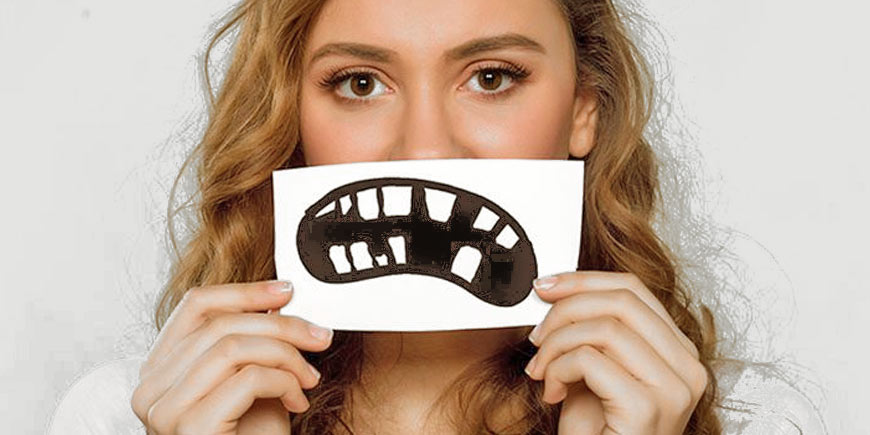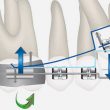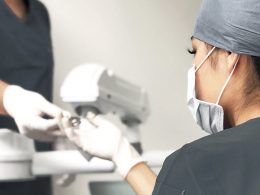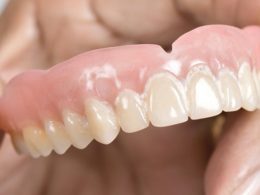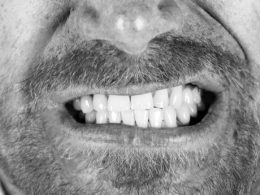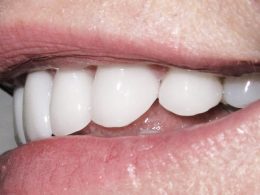Table of Contents
Loss of teeth is a real public health problem in Venezuela and in the world. So much so, that on average, at 35 years of age, almost 80% of Latin Americans are missing a permanent tooth. By age 50, this number dramatically increases to an average of 12 missing teeth per person.
Undoubtedly, the greatest efforts of current Dentistry must be directed to prevent tooth loss, through the development and application of prevention and information campaigns, minimally invasive conservative treatments and above all; to its scientific articulation with the different institutions and public bodies of the states, to make the policies and such campaigns on oral health truly massive and effective.
However, the profession must also respond effectively to current demands, within which the replacement of missing or lost teeth represents one of its most frequent activities.
In this post we will address the causes of tooth loss, its consequences and fundamentally; the main restorative or prosthetic options available to patients to replace them and thus regain their health, aesthetics and function.
Most Frequent Causes of Tooth Loss
The vast majority depend on the patient, are usually under his control and are his absolute responsibility. That is why it is so important to maintain a good oral health routine and visit the Dentist every 6 months for a professional dental checkup and cleaning.
If it is not done, is very likely that at early age display the following diseases and start making real destructions in his mouth
- Periodontal Disease Gum disease, also known as periodontal disease, is the leading cause of tooth loss in adults; being responsible for approximately 70% of missing teeth. It consists of a chronic bacterial infection of the gums, which as it progresses, destroys the soft tissues and the alveolar bone, causing the teeth to lose their support, loosen and fall out.
- Caries Caries are infectious decalcifications of the tooth structure, which usually generate large cavities in it. If they are not prevented or treated on time, they can infect the pulp of the tooth, which will surely merit a root canal treatment and its subsequent reconstruction, or even, tooth extraction. Good oral hygiene, the modification of some eating habits and regular visits to the Dentist; are usually enough to prevent or treat cavities on time.
- Physical Injuries or Trauma Accidents happen, especially during sport practice, so mouthguards are important. Falls, car accidents, and physical aggressions can also cause tooth loss. However, there are some simple common sense recommendations to avoid dental fracture due to bad habits: do not use your teeth to uncap bottles, loosen knots, tear labels or cut threads. Nor to chew ice, open shells or bite on foreign and blunt bodies. Natural teeth are extraordinarily strong, but they have a limit.
- Other Diseases and Risk Factors The following systemic diseases and risk factors can also cause tooth loss: diabetes, hypertension, arthritis, smoking, and poor nutrition. Always make sure to mention any illness or habit to your Dentist so that you can work together to preserve your teeth as much as possible.
Whether a single tooth or several are missing, there are a number of restorative options to replace them. We will describe below some of the most common tooth replacement methods to restore health and smile.
Main Restorative Options
The alternatives detailed below have been categorized in descending order, from highest to lowest, in relation to their biological quality and the benefits they provide to the patient. The first 5 correspond to cases of partial edentulous patients (with absence of only one or some teeth), and the last 3 to total edentulous patients (with absence of all teeth):
1- Single Dental Implants
Maybe the most ubiquitous tooth replacement method is the dental implant. A dental implant looks and feels like a natural tooth. Since dental implants are permanent, the patient may even forget which tooth is missing. With single implants it is possible to replace one, several or even all the teeth in the mouth.
However, implants require enormous professional and team work. The Surgeon replaces the dental roots with metal cylinders, which then hold the artificial tooth or ceramic crown in place. However, it is a treatment that is carried out in 2 phases, with a total execution time of between 4 and 6 months.
Compared to other restorative alternatives, dental implants are the closest to the ideal prosthetic prototype. They also provide the most natural feeling, and since they are permanent replacements, the need for the inevitable routine adjustments typical of removable dentures is eliminated.
However, it is important to consider that dental implants require a considerable initial investment. In addition, they require invasive surgery and may not be the best option for those with risks or surgical contraindications.
2- Fixed Bridges Over Dental Implants
When several teeth are missing in a row or contiguous, a fixed bridge supported by implants is an excellent alternative. Instead of replacing each missing tooth with a dental implant, the Prosthetist fixes a row of several artificial teeth only at their ends. Thus the middle teeth (phantoms) do not require implants.
An implant-supported bridge is inexpensive under the right circumstances. The bridge is as effective and realistic as single dental implants.
However, it is only a good option when several adjacent teeth are missing. Treatment requires several visits to the clinic and, like dental implants, they are a permanent solution.
3- Fixed Bridges Over Natural Teeth
A tooth-supported fixed bridge is a type of prosthesis that rests on healthy teeth that the patient still has in his mouth.
To make it, we have to grind and wear the natural teeth that the patient still has around the space caused by tooth loss. In this way the fixation and anchoring of the structure is prepared. It is possible that during this process it is necessary to devitalize some of the teeth through a root canal treatment.
Without a doubt, it was the best restorative option before the appearance and development of dental implants.
4- Adhesive or Maryland Bridges
Currently, a good alternative to the loss of a single tooth can be the Maryland bridge. The Maryland bridge is a fixed adhesive prosthesis that remains anchored in the teeth themselves, and can be used to replace the absence of a tooth permanently or provisionally.
Its main advantage is that it is not necessary to grind or wear the natural teeth of the patient, since it is fixed through wings that are supported on the lingual or palatal surfaces of the neighboring teeth. The wings are then coated with composite to keep them immobile in place.
However, a Maryland bridge can only be used in certain very favorable clinical situations and can sometimes have little longevity. It is a very conservative type of fixed prosthesis but not very resistant to the forces of chewing.
5- Removable Partial Dentures
In cases of economic limitation or surgical contraindication, removable partial dentures can be a valid option to replace missing teeth; despite their great aesthetic and functional limitations. Unlike total dentures, a removable partial denture can have only one or more teeth. The prosthesis is held in place by metal hooks that hug some natural teeth and provide retention. It can be inserted and removed by the patient himself (removable prosthesis).
Removable partial dentures are by far the most economical option. Also, they are the ones that require the least amount of work, since it is not necessary to perform surgeries or prepare abutments.
However, they are also the least aesthetic and most uncomfortable, as they expose metal hooks when smiling, are bulky and always move when chewing and eating. Inevitably, they cause damage over time to the supporting tissues and remaining teeth, so it should always be the last resource to consider.
6- Hybrid Prosthesis
A hybrid prosthesis is one that combines several materials. It is a single fixed structure that screws onto 4, 6 or 8 implants and generally replaces all the teeth in an arch. It can be made of metal-porcelain or metal-acrylic, and in cases of maxillary atrophy or severe bone resorption, it incorporates pink artificial gingiva to reestablish the vertical occlusal dimension, lip support, dental aesthetics and facial fullness of the person.
It is perhaps the most economical way to replace all the teeth in an arch using a fixed prosthesis.
7- Overdentures
It is a total acrylic resin prosthesis, removable and that anchors on 2, 3 or 4 implants. It is known as a “socket denture” because it relies on a male and female system for insertion and removal.
The fact that it can be removed by the patient considerably facilitates the oral hygiene process, and although it is removable, the implants provide it great retention and stability compared to a conventional or muco-supported prosthesis.
8- Conventional or Muco-Supported Total Dentures
It is the popular “planch” and is still used when there are no longer any teeth in the mouth. It has very little retention and stability, although some people get used to it and come to tolerate it.
Currently there is the possibility of anchoring it to 2, 3 or 4 implants to transform it into a much more comfortable and functional implant-assisted overdenture, of course, as long as the bone and systemic conditions of the patient allow it.
Without Discussion, Osseointegrated Dental Implants Represent the Best Restorative Option in Our Times”.
DENTAL TIP
What Is the Real Impact of Dental Absences?
In some cases, the impact may be minimal or zero. Depending on the location of an edentulous space, it may not really show up. This could be the case if a tooth is missing at the back of your mouth. However, this is only from an aesthetic point of view, since the absence of even a single tooth will always favor the displacement of neighbors and antagonists towards the space, completely altering the alignment of the entire arch.
When the losses are multiple, in addition to the aesthetic compromise and the dental displacement described, there is a significant functional overload on the remaining teeth. Imagine a heavy duty semitrailer designed to roll with 18 tires, but only uses 9. What do you think will happen to those 9 tires?, do you think they will last as long as they should? Well, the same will happen with your teeth if you do not replace the missing ones as soon as possible.
In addition, as the number of missing teeth increases, the chewing capacity decreases. This can seriously limit a person’s diet and make them more prone to systemic diseases such as gastritis, diabetes, and obesity; mainly due to the low consumption of fruits and fibers (impossible to chew without teeth) and an increase in “soft” processed flours.
Making Dentistry Care Simple and Affordable…
DENTAL VIP is one of the most modern and recognized private dental clinics in Venezuela, and it could be your trustworthy partner in dental treatment abroad offering you: over 12 years of experience in Dental Tourism, excellent Dentists, high quality treatment covered by guarantee, comprehensive care, supportive and helpful staff, affordable prices and comfortable stay at our recommended hotels in Caracas.
All Dentists working at DENTAL VIP have a long experience in Dentistry and are highly qualified. Our Dentists, apart from having fourth level studies, regularly take part in domestic and foreign trainings, conferences and seminars.
The quality is guaranteed, and the price too! Do not waste any more time, contact us today and save up to 70% on extensive or highly complex dental treatments.






